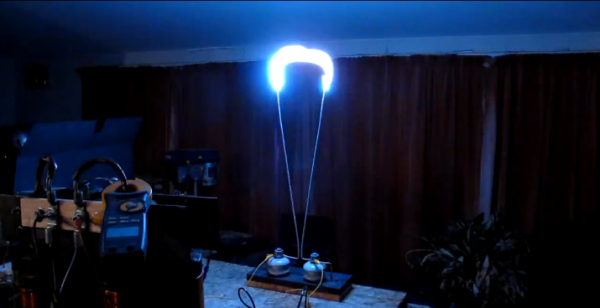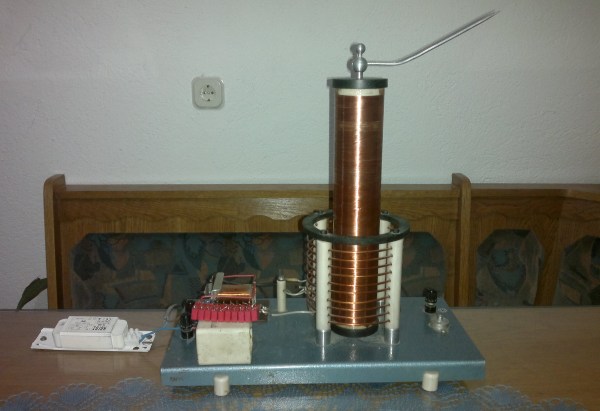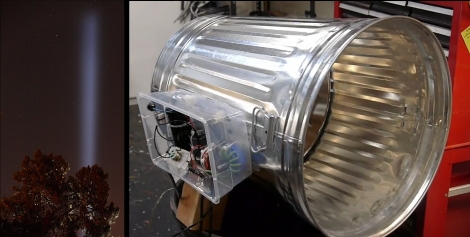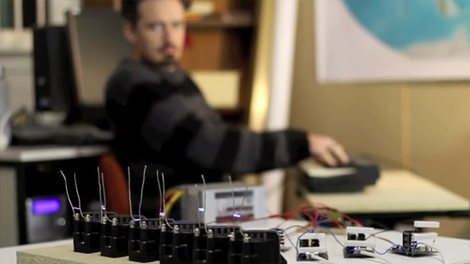[Gordon Kirkwood’s] focus as a photographer is in capturing ephemeral phenomena, that is, things that are exhilarating to see but also fleeting. In the pursuit of documenting such blips of beauty found in the natural word, he has taken on engineering the circumstance through which they occur by means of technology.
One of the amazing mechanical creations he’s constructed to aid in his photography is a large computer controlled, bubble blower. A few stepper motors work to dilate three segments of soap-soaked rope engaged at 120 degree angles to create a triangular aperture. When the aperture closes, the segments overlap slightly, covering themselves with a consistent coating of suds. When the segments stretch apart, a fan blows a current of air towards the center, pushing the sheath of fluid into ginormous glimmering orbs which he uses as the focal point in some of his photographs.
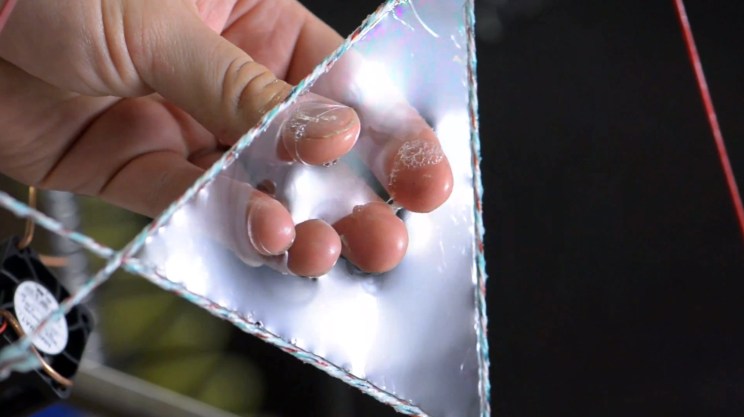
More currently, [Gordon] has been developing a body of work that involves zapping botanical subject matter with a quarter-million volts from a portable arc producing device he’s created and capturing the reaction with an ultra low-tech camera (the kind with the bellow and sheet you hide under while exposing the film). Using a method all his own, the shots recorded on large format film are claimed to turn out with even more clarity than any current digital camera in use today. [Gordon] has launched a crowd funding campaign to support a pilgrimage to the majestic island of Hawaii, where he’ll use his lightning producing apparatus on ten different specimens of tropical plant life so that he can record the outcome with his tried and proven technique. (see below an artsy shot of his lightning summoner)
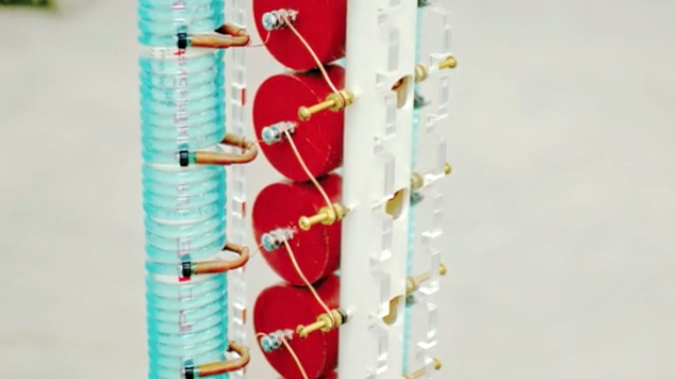
Sometimes Kickstarter isn’t so much about commercialism as it is starting a dialogue with the world and beginning a personal adventure. May the journey lead to new inventions and larger, more ambitious projects! Oh yeah- the bubble blowing machine is a must-see in action. Wicked cool:
Continue reading “Ephemeral Photographs Staged With Artful Inventions” →



